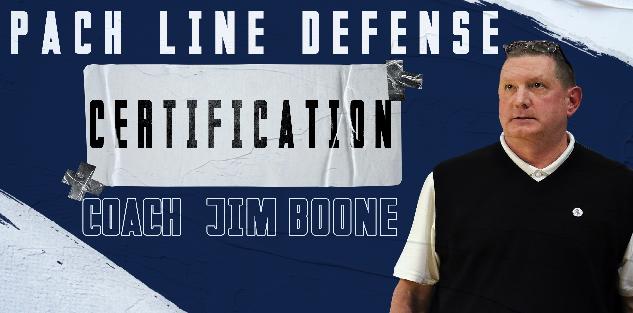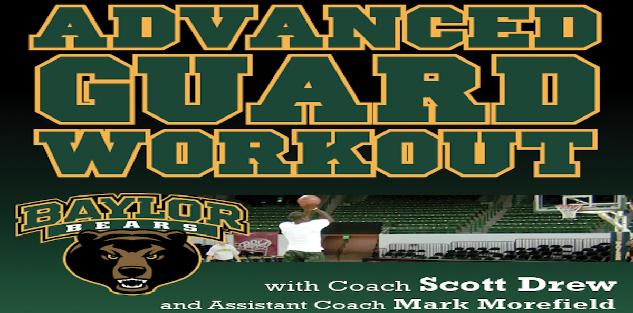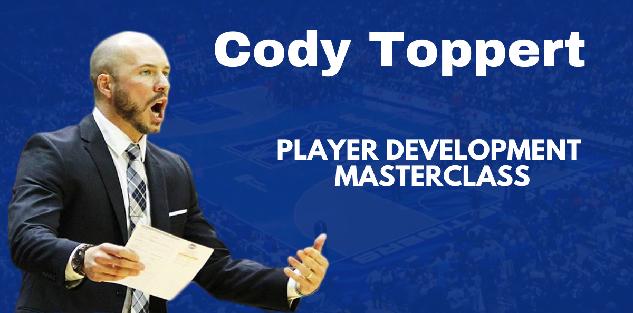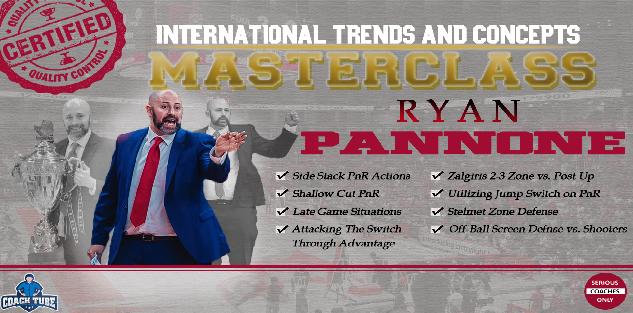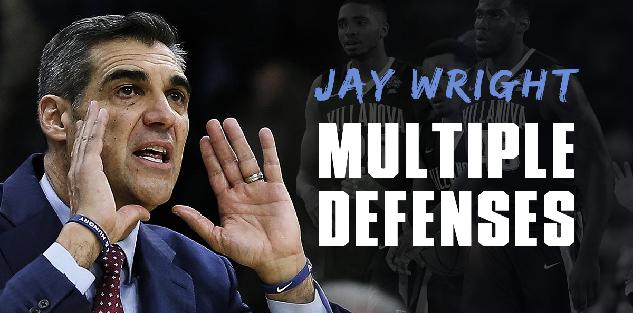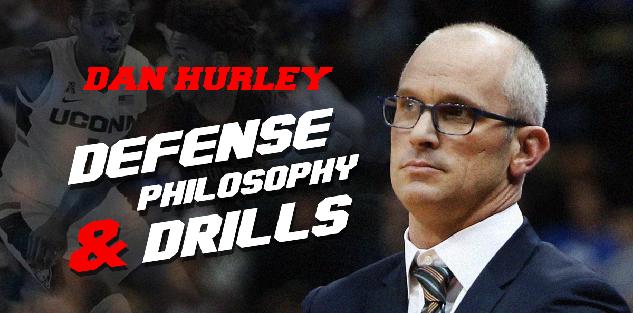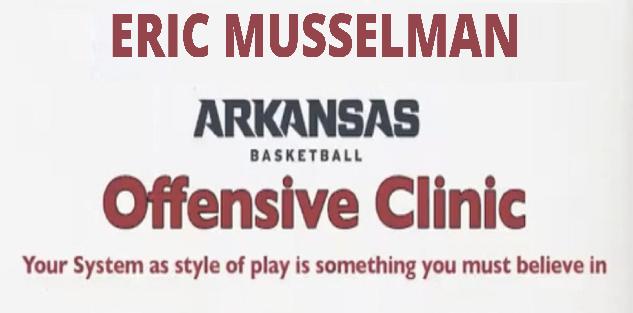Featured courses
- Two Great Game Situational Workouts For the Basketball Offseason by Grant Young
- Two Reads Basketball Players Must Understand Before Executing the Ball-Screen by Grant Young
- Two of LSU Coach Kim Mulkey’s Game-Winning Inbounds Plays by Grant Young
- Three Effective Early-Season Defensive Basketball Drills by Grant Young
- Four Essential Tips For Basketball’s 1-3-1 Zone Defense by Grant Young
- Four Zone Defense Drills to Strengthen Your Team by Grant Young
- How to Beat the Three Most Common Pick and Roll Coverages by Grant Young
- Two Drills to Improve Shooting at the Start of the Basketball Season by Grant Young
- Core Basketball Principles That Dallas Mavericks Coach Sean Sweeney Teaches by Grant Young
- Three Competitive Shooting Drills For Your Basketball Team by Grant Young
- How To Teach The ‘I’ Generation of Basketball Players by Grant Young
- Three Elite Drills to Begin a Basketball Practice With by Grant Young
- How to Build a Championship-Winning Basketball Team Culture by Grant Young
- Two of Texas Women’s Basketball Coach Vic Schaefer’s Tips For Team Culture by Grant Young
- Atlanta Dream WNBA Coach Brandi Poole’s Four Sets for Secondary Offense by Grant Young
- NC State Basketball Coach Brett Nelson’s 4 Crucial Point Guard Qualities by Grant Young
- Kentucky Coach Mark Pope’s Five Guard Rules For Offense by Grant Young
- McNeese State Basketball Coach Will Wade’s 4 Core Pillars by Grant Young
- 4 Tips To Instantly Improve Your Free Throw Shooting by Tyler Linderman
- Assemble a Championship-Caliber Basketball Rotation by Brandon Ogle
- Two of UConn Coach Dan Hurley’s Key Defensive Drills by Grant Young
- Four Post Moves All Basketball Forwards Should Have In Their Bag by Grant Young
- Four of Baylor Coach Nicki Collen’s Midseason Pick and Roll Adjustments by Grant Young
- WNBA Legend Sue Bird’s Two Tips For Attacking on Offense by Grant Young
- Houston Coach Kelvin Sampson’s Three Keys for Building a Basketball Program by Grant Young
- Two of Tom Izzo’s Top Michigan State Defensive Drills by Grant Young
- Four of Olympic Gold Medalist Coach Mechelle Freeman’s Relay Race Strategies by Grant Young
- Three Key Strategies Will Wade Uses to Build a Dominant Team by William Markey
- Five UConn Huskies Men’s Basketball Plays That You Can Use by Grant Young
- Three Tips for Maintaining Team Culture at the End of a Basketball Season by Grant Young
- Three Dribble Drive Motion Drills to Teach Your Basketball Team by Grant Young
- Three Dribbling Drills For Non-Primary Ball Handlers by Grant Young
- Four Advanced Ball Handling Drills For Basketball Guards by Grant Young
- Three Tips to Sharpen Your Post Player’s Footwork in Basketball by Grant Young
- These Three Pick and Roll Drills Are Crucial For Any Ball Screen Offense by Grant Young
- Three Closeout Drills to Improve Basketball Shooting Defense by Grant Young
- Three Tips to Perfect the Packline Defense in Basketball by Grant Young
- Four Keys to Executing the Read and React Offense in Basketball by Grant Young
- Three Tips to Develop Elite Basketball Shooters by Grant Young
- Three Crucial Keys to Executing the 5 Out Offense in Basketball by Grant Young
- These Three Offensive Sets Will Help You Beat Any Zone Defense by Grant Young
- Three Transition Basketball Drills To Play With More Pace by Grant Young
- Three 5 Out Offense Drills Any Basketball Coach Can Use by Grant Young
- Four Vital Techniques for a Motion Offense in Basketball by Grant Young
- Three Baseline Inbounds Plays To Win Your Basketball Team Games by Grant Young
- Four Drills For Sharpening the European Ball Screen Offense by Grant Young
- Three Positioning Tricks For a Basketball Zone Offense by Grant Young
- Three Rules to Perfecting Basketball's Lock Left Defensive System by Grant Young
- UCLA WBB Coach Cori Close’s Two Keys to Winning the Mental Game by Grant Young
- Four of Alabama Coach Nate Oats’ Favorite Basketball Drills by Grant Young
- Three Ways To Turn Transition Offense in Basketball Into Points by Grant Young
- Three Drills to Master Basketball's Pack Line Defense by Grant Young
- Three Transition Defense Drills to Halt Fast Breaks by Grant Young
- Four Offensive Rebounding Drills to Win Second Possessions by Grant Young
- 4 Defensive Technique Drills from Boston Celtics Assistant Coach Brandon Bailey by Marek Hulva
- 5 Drills to Improve Ball Handling by Tyler Linderman
- 13 FUNNY BASKETBALL GIFS by Alex
- BASKETBALL SPEED AND AGILITY: 8 QUESTIONS FOR COACHTUBE EXPERT RICH STONER by Jaycob Ammerman
- Defensive Strategies for Basketball by Ryan Brennan
- 4 Keys To Turning Your Program Into Championship Contender By Dallas Mavericks Coach Sean Sweeney by Marek Hulva
- 5 Components to Creating a Winning Basketball Program by Justin Tran
- Guide to Becoming a Lethal Scorer in Basketball by Justin Tran
- Zone Defense In the NBA Eastern Conference Finals by James Locke
- Mastering Court Mobility: Tips for Effective Movement in Basketball by Justin Tran
- 5 Basketball Shooting Drills: How to Develop a Sharpshooter by James Locke
- 6 Points of Emphasis for a Successful 5 Out Offense by Jaycob Ammerman
- Effective and Efficient Methods to Practice During the Basketball Season by Justin Tran
- Three Great Passing Drills From a Basketball Coaching Legend by Grant Young
- 7 Principles For Perfecting the Princeton Offense in Basketball by Grant Young
- How to Replicate A Modern NBA Offense by Grant Young
- Three Great Two-Ball Dribbling Drills For Basketball Development by Grant Young
- Two Rebounding Drills to Win Your Basketball Team Championships by Grant Young
- How to Improve Your Basketball Team’s Defense With the Shell Drill by Grant Young
- How Baylor Basketball’s Scott Drew Develops Elite Guard Play by Grant Young
- Off-Ball Movement Tips and Strategies: Lessons From the NBA Finals by James Locke
- Player Development: Scott Drew’s Tips for Producing NBA Guards by James Locke
- How to Execute a Spread Offense in Basketball by Grant Young
- Four Quality Quotes From Four Final Four Coaches by Grant Young
- A Guide to the Pack Line Defense by Alex Martinez
- 3 Defensive Build Up Drills to Improve Team Basketball Defense by Grant Young
- Battle of Two Great Coaches: Best Plays from the NBA Finals Contenders by Justin Tran
- 10 Creative Ways Athletic Programs Can Use a Video Board to Raise Money by Coach Williams
- How to Use 3 on 3 to Improve Your Basketball Team by Grant Young
- How to Defend the Pick and Roll by Grant Young
- Mastering Basketball Defense: Techniques, Drills, and Strategies for Success by Justin Tran
- Three Tips From The Coach Who Developed Giannis Antetokoumnpo by Grant Young
- 2023 NBA Draft: Skills and Technique from Top Prospects by Justin Tran
- From College to the Pros: Transitioning the Dribble Drive Offense by Justin Tran
- Positionless Basketball: Redefining Roles on the Court by Justin Tran
- Revolutionize Your Offense: Proven Concepts to Elevate Your Basketball Game by Justin Tran
- 5 Essential Fastbreak Drills Every Basketball Coach Should Know by James Locke
- How to Run a Circle Offense in Basketball by Grant Young
- Game-Changing Strategies: ATO Plays in the EuroLeague and Olympics by Justin Tran
- How to Stand Out at Basketball Tryouts by Grant Young
- How to Improve Your Basketball Team’s Transition Defense by Grant Young
- Indiana Fever GM Lin Dunn’s Two Keys For Women’s Basketball Coaches by Grant Young
- Strength Training Strategies Every Basketball Player Should Have by Grant Young
- A WNBA Basketball Coach’s Four Priorities In Transition Defense by Grant Young
- Three Adjustments to Make When Your Basketball Offense Isn’t Working by Grant Young
- Three Pillars to Applying Defensive Pressure on the Basketball Court by Grant Young
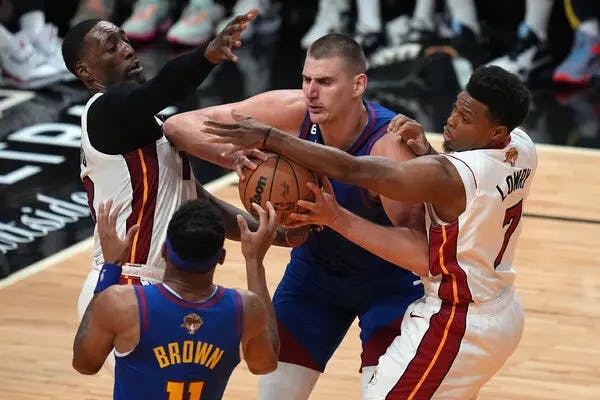
Four Essential Tips For Basketball’s 1-3-1 Zone Defense
- By Grant Young
The 1-3-1 zone defense in basketball is effective for several reasons:
1. Strong Perimeter Defense: The formation features one player at the top, three across the middle, and one at the back. This setup allows for aggressive pressure on the ball handler and limits open shots from the perimeter. The top defender can rotate quickly to contest outside shots or redirect the offense.
2. Interior Protection: With three players in the middle, the 1-3-1 is particularly strong against drives to the basket. This congestion makes it difficult for opposing players to penetrate, forcing them to rely on jump shots or tough passes. The player at the back serves as a last line of defense, ready to contest any shots taken close to the rim.
3. Transition Opportunities: When executed well, the 1-3-1 creates opportunities for fast breaks. If the defense secures a rebound, the top defender can quickly move the ball downcourt, exploiting any disorganization in the opposing team’s transition defense.
4. Forced Off-Ball Movement: The structure of the zone can force opposing teams to make quick decisions. Players must move off the ball and look for gaps, which can lead to rushed shots or turnovers if they’re not careful. This unpredictability can disrupt an opponent's offensive rhythm.
5. Adaptability: The 1-3-1 can be adjusted to counter specific offensive strengths. For example, if an opponent is particularly good at shooting from the corner, defenders can shift their positioning to apply extra pressure in that area.
6. Creating Turnovers: The zone naturally encourages teams to pass the ball around the perimeter. If the offense becomes too focused on finding an open shot, they may neglect ball security, leading to mistakes and turnovers that the defending team can capitalize on.
All of this is proof that when implemented correctly, the 1-3-1 zone defense can be a versatile and effective strategy. And since there’s a slim difference between a good and great 1-3-1 zone, we’ve taken vital lessons from three basketball coaches who have seen success with the zone to help you improve your own team’s zone abilities.
Bryan Gates - You Have to Have a Man
In 2023, Bryan Gates became an Assistant Coach for the Philadelphia 76ers. In his professional coaching career that has spanned 30 seasons, Coach Gates has worked within the Phoenix Suns, Minnesota Timberwolves, Sacramento Kings, New Orleans Pelicans, and Idaho Stampede franchises.
Coach Gates’ ‘Zone Defense Concepts’ course details a crucial concept about running any zone defense that often gets misunderstood.
“In my opinion, you have to have a man,” Coach Gates says of each defensive player in a zone. What he means by this is that, while a zone defense obviously is different from a man-to-man defense, each player should always have awareness of where the offensive players are on the court, and which one of them is closest and the biggest threat to their zone responsibility.
This is especially important when knowing which player each defender needs to close out to in the case of them taking a jump shot, and which player each defender needs to box out when a shot goes up.
The same goes with pick and roll coverages, you remain true to whichever your core pick and roll coverage, adapt to ensure that no play gets left open, and make a closeout and box out when need be.
Ronnie Hamilton - Vs. High Post or Weak Side Flash
Ronnie Hamilton enters his first season at the University of Louisville as an assistant coach in 2024-25. Hamilton arrives at Louisville after spending the last two seasons as an assistant at LSU. Hamilton came to LSU after four seasons at Ole Miss, where he worked primarily with the guards and helped Rebels earn All-SEC honors four times.
Coach Hamilton’s ‘The Complete Guide to the 1-3-1 Defense’ course discusses that when the defense is setting up as the offense is dribbling up the court and a post player flashes up to the elbow or the free throw line, it’s up to the middle defender to get in the passing lane and stop that entry pass from occurring.
This is because the 1-3-1 defense will be higher up than it usually is before the offense gets into their half court, with the three-wide defenders all around the perimeter. If the ball gets into the elbow in this positioning it will create openings on the wings and in the paint.
If the ball is passed to a wing defender in this position, it’s the middle man’s job to sprint down to the opposite block to ensure that a pass isn’t made to the weak side wing (because the deepest defender will be closing out), who would likely be flashing to the block.
Frank Fogg - Cut Throat Drill
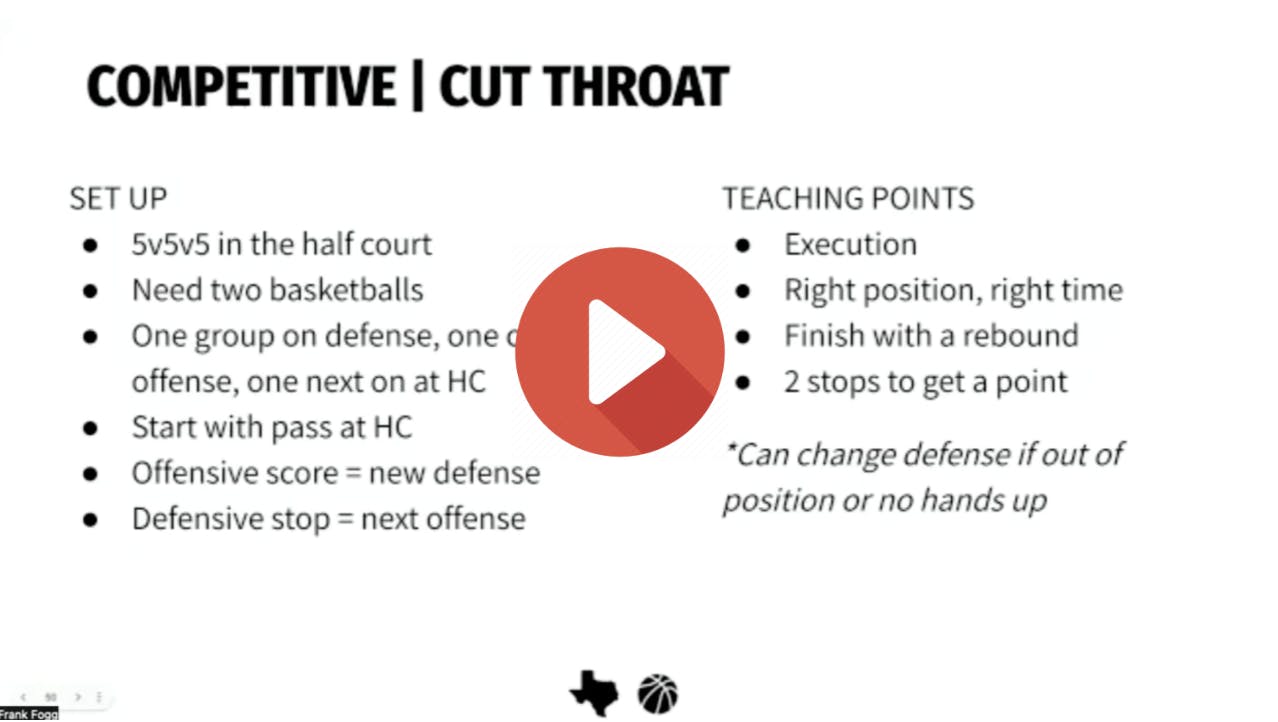
Coach Frank Fogg, with 10-plus years of coaching experience, loves to share his championship-winning knowledge. Working as a high school coach at the highest level in Texas, Coach Fogg is a go-to resource for coaches across the nation.
Coach Fogg’s ‘The 1-3-1 Defensive System’ course discloses a ‘Cut Throat’ drill that starts with three teams of five (or four teams of four depending on your roster) on one-half court and two balls. One team will be on offense, one on defense, and another at half-court. If the team on offense scores then the defense goes off and if the defense gets a stop then the offense goes off.
The teaching points here are that switching players so often will force the defense to adapt and get used to communicating and working with teammates while emphasizing effectiveness and execution.

